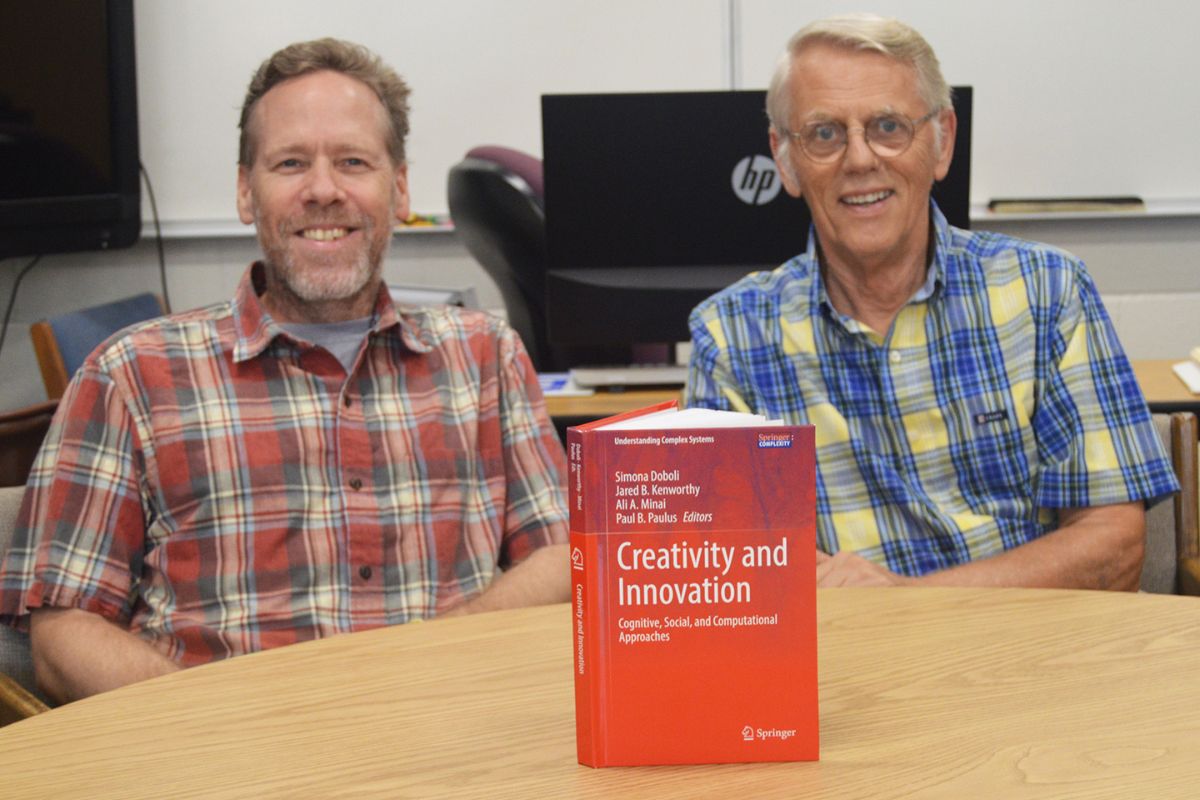Psychology researchers publish book on innovation and creativity

Two psychology researchers from The University of Texas at Arlington have published a new book about how innovative ideas emerge in individual and group environments.
Jared Kenworthy, professor of psychology, and Paul Paulus, dean emeritus and former professor of psychology, are co-authors of the book, titled Creativity and Innovation: Cognitive, Social, and Computational Approaches.
They were joined by Simona Doboli, professor of computer science at Hofstra University, and Ali Minai, professor of electrical engineering and computer science at the University of Cincinnati. The book is part of the series Understanding Complex Systems and is published by Springer.
It focuses on how creative ideas emerge from cognitive and social dynamics. In particular, it presents data, models and analytical methods grounded in a network dynamics approach. The authors discuss the process of innovation at a range of scales, from individual thoughts to small groups to large social networks. They also provide an introduction to experimental and computational methods for studying creativity.
“It has long been hypothesized that innovation arises from a recombination of older ideas and concepts, but this has been studied primarily at an abstract level,” the authors wrote. “In this book, we consider the networks underlying innovation—from the brain networks supporting semantic cognition to human networks such as brainstorming groups or individuals interacting through social networks—and relate the emergence of ideas to the structure and dynamics of these networks.”
Kenworthy and Paulus contributed four chapters on the cognitive and social processes involved in the various stages of the collaborative creative process, which include contributions from their computer science colleagues.
Paulus noted that the book summarizes the empirical and theoretical advances of a research team that has collaborated since 2006. That team was brought together by Vincent Brown, a professor of psychology who began his career at UTA and was working at Hofstra University when he died in 2011. The book is dedicated to him.
The team has consisted of cognitive and social scientists from UTA and computer scientists from Hofstra, the University of Cincinnati and Stony Brook University. They have been funded by three grants from National Science Foundation and are presently funded by the U.S. Department of Defense. Kenworthy joined the team in 2012 when he and Paulus merged their research labs.
“Collaborative creativity and the subsequent elaboration and decision phases can be quite challenging,” Paulus said. “We outline the bases for these challenges and ways groups can overcome them, including how to effectively tap diversity in collaborative creativity and tap and build on the most novel ideas.”
Kenworthy’s research interests include both intergroup relations and group processes. Within intergroup relations, his interests include understanding the predictors of religious, ethnic and national prejudice as well as prejudice reduction. Within group processes, his interests include the predictors and consequences of ingroup identification, along with group coordination and collective creativity and innovation.
Paulus’ research has focused on group processes with an emphasis on the social and cognitive process of creative collaboration. His research has been supported by a series of grants from the National Science Foundation and U.S. Army Research Office.
- Written by Greg Pederson, College of Science